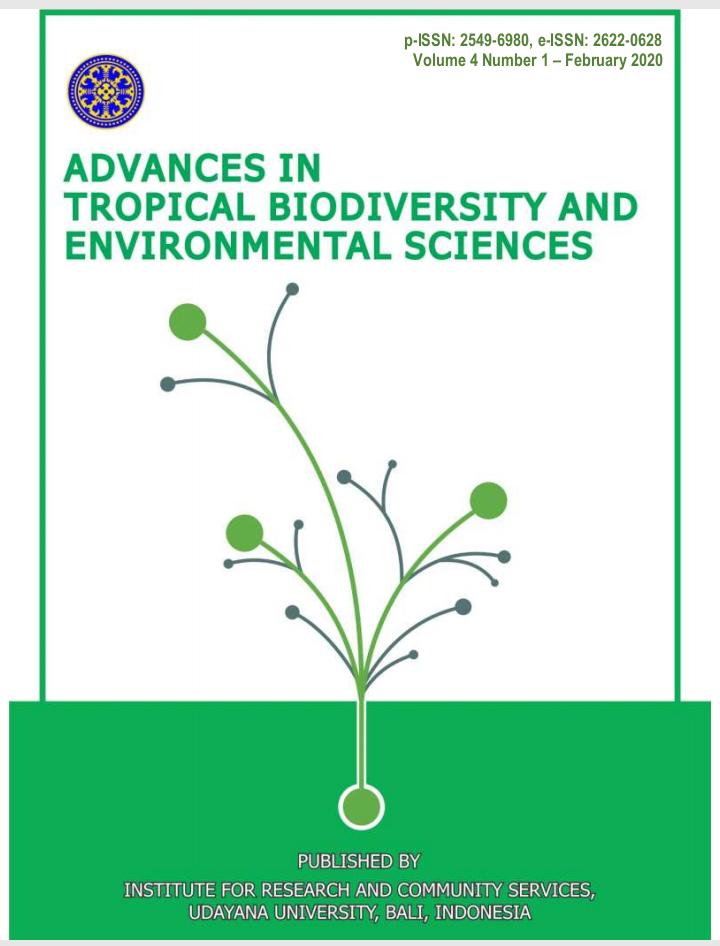Quality of Chaetoceros calcitrans Cultured with Different Concentrations of Potassium Nitrate (KNO3)
Abstract
Addition of different fertilizer concentrations into cultivation media affects the cell density of microalgae. Potassium nitrate (KNO3), is one of the components in Guillard fertilizer composition commonly used for microalgae culture. This study aims to determine the quality of Chaetoceros calcitrans when cultured with different concentration of KNO3. This research was conducted from November 2019 to January 2020 at Balai Perikanan Budidaya Air Payau (BPBAP) Situbondo and Biosain Laboratory, Jember State Politeknik, East Java. This study consists of four treatments and three replicates. The object in this study was C. calcitrans culture with initial density 105 cells/ml. The main parameters observed were cell density, biomass, protein and amino acids contents and medium parameters such as temperature, pH, DO, salinity, nitrate and phosphate. There were four concentrations of KNO3 used in this study, namely control (75 g/l), treatment Group A (100 g/l), treatment B (125 g/l) and treatment C (150 g/l). The results showed that the cells density of C. calcitrans at control, treatment Group A, B and C were 110.4; 105.2; 108.3; and 100.8 (×104 cells/ml), respectively. This study indicated that different concentration of KNO3 affect the starting point of stationary phase, but One Way ANOVA test showed that those treatments had no significant effect (P?0,05) on the growth rate and dry biomass of C. calcitrans. Finally, we found that the protein content in addition of 75, 100, 125 and 150 g/l KNO3 were 9.748; 8.802; 6.812; and 3.776%, respectively.
Downloads
References
[2] Ermayanti E. 2011. Chemical Components of Cultivation Chaetoceros Gracilis in Outdoor Using NPSI Fertilizer. Skripsi. Bogor: Teknologi Hasil Perairan:Institut Pertanian Bogor.
[3] Sanjaya AS, JA Prajaka, N Aini, TH Soerawidjaja. 2017. Determination of Potassium Content in Oil Palm Empty Fruit Bunch in Langsat Area East Kutai Using Extraction Method. Jurnal Integrasi Proses, 6(4):07-12.
[4] Setyaningsih I, Desniar, E. Purnamasari. 2012. Antimicrobials from Chaetoceros gracilis Cultivated with Different Irradiation Times. Jurnal Akuatika, 3(2): 180-189.
[5] Rizky YA, I Raya, S. Dali. 2012. Determination of Phytoplankton Cell Growth Rate Chaetoceros calcitrans, Chlorella vulgaris, Dunaliella salina, and Porphyridium cruentum. Skripsi. Makassar: Kimia, Universitas Hasanuddin
[6] Huang WW, BZ. Dong, ZP Caidan, SS Duan. 2011. Growth Effect on Mixed Culture of Dunaliella salina and Phaeodactylum trucormutum under different inoculation densities and nitrogen concentrations. African Journal of Biotechnology, 10(61): 13164-13174.
[7] Kawaroe M, T Prartono, A Sunuddin, DW Sari, D Augustine. 2009. Specific Growth Rate of Chlorella sp. and Dunaliella sp. Based on the Difference between Nutrients and Photoperiods. Jurnal Ilmu-Ilmu Perairan dan Perikanan Indonesia, 16(1): 73-77.
[8] Trikuti K, AAMD Anggreni, IBW Gunam. 2016. Effect of Media Type on the Biomass Concentration and Protein Content of Chaetoceros Calcitrans. Jurnal Rekayasa Dan Manajemen Agroindustri, 4(2): 13-22.
[9] Akbar TM. 2008. Effect of Light on Antibacterial Compounds of Chaetoceros gracilis. [Skripsi]. Bogor: Teknologi Hasil Perairan: Institut Pertanian Bogor.
[10] Wijaya SA. 2006. Effect of Different Urea Concentration on Growth of Nannochloropsis oculata. Skripsi. Surabaya: Kedokteran Hewan, Universitas Airlangga
[11] Herawati VE, J Hutabarat. 2014. Effects of Growth, Fat Content and Profile Essential Amino Acid of Skeletonema costatum in Mass Culture Using Different Technical Culture Media. Jurnal Ilmu
Perikanan dan Sumberdaya Perairan, 3(1):221-226.
[12] Borowitzka MA. 1988. Algal Growth Media and Sources of Algal Cultures. Cambridge: Cambridge University Press.
[13] Rai SV, M Rajashekhar. 2014. Effect of pH, Salinity and Temperature on The Growth of Six Species of Marine Phytoplankton. J. Algal Biomass Utln, 5(4): 55-59.













